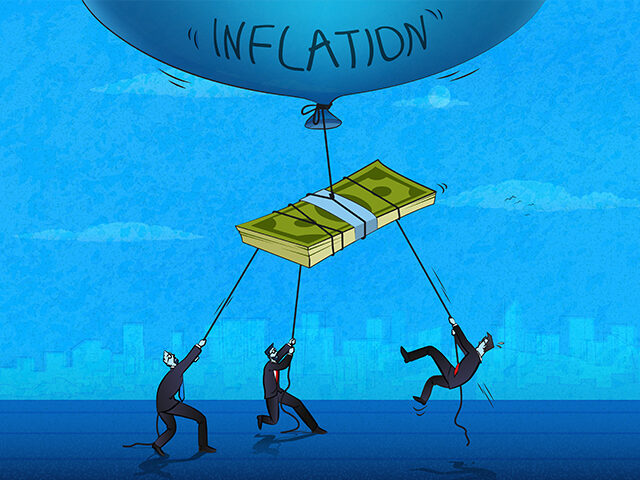The Money Supply Points to Higher for Longer Inflation
Why has inflation been so stubbornly persistent this year? One reason may be that the money supply stayed elevated for even longer than previously thought.
The Federal Reserve on Wednesday released its estimate of the money supply. It showed that M2—a broad measure of money supply in the economy that includes savings deposits, currency in circulation, and balances in retail money-market funds—fell 0.6 percent in February, a decline of $12 billion from $21.1835 trillion in January to $21.0625 trillion.
There was also a very notable revision to the prior month. The preliminary estimate for M2 in January had shown an increase of $30.9 billion compared with December. The revised figure shows a contraction from December to January of $141.7 billion. This comes from a significant upward revision to the December estimate of M2 from $21.2362 trillion to $21.3252 trillion and a downward revision for the January estimate from $21.2671 trillion to $21.1835 trillion.
This means that the money supply had been higher around the end of the year than was thought, which could go some of the way to explaining why inflation was surprisingly resurgent as this year kicked off. The much bigger decline than previously thought as the year started could also be part of what has roiled banks. Deposits are not just fleeing because investors are seeking higher interest on their money or are panicked over the health of banks. The money supply was contracting rapidly in January and February.
Money Peaked in July Not March
Looking back through last year, the revised data paint a very different picture of the flow and ebb of the money supply—and, therefore, when we should expect inflation to subside. Generally speaking, inflation usually lags changes in the money supply by 12 to 24 months, according to Steve Hanke, professor of applied economics at John Hopkins University, and John Greenwood, a fellow at the Johns Hopkins Institute for Applied Economics, Global Health and the Study of Business Enterprise.
The older data showed that M2 peaked in March of 2022 and had been declining—with some month-to-month ups and downs—ever since. The revised data show that M2 peaked much later—in July of 2022. The implication is that the famously “long and variable” lags of monetary policy likely still have a way to run before they will bring inflation under control.

If you were expecting a recession in the second or third quarter of 2023 based on a March peak in the money supply, you should probably now be looking for the recession to be delayed until the fourth quarter of this year or even next year. The money supply stayed higher for longer, so inflation and economic growth are likely to stay higher for longer too.
Larry Kudlow of Fox Business has been one of the few voices in business news urging us to look to the money supply for guidance on the economy, something a lot of people who think of themselves as economic sophisticates think is old-fashioned. It looks to us like Kudlow—whose inflation fighting instincts date back to his work in the Reagan administration—is on to something.
A Pending Housing Recovery
The housing market keeps sending up signals that a recession is not imminent. As we have pointed out, housing starts rose 9.8 percent in February, and permits jumped 13.8 percent. Homebuilder sentiment was up for the third consecutive month in March.
On Wednesday, the National Association of Realtors reported pending home sales for February. These were expected to show a decline of around three percent compared with the prior month. Instead, contract signings rose 0.8 percent. That marked the third consecutive monthly increase for pending home sales. These typically becoming closed sales and get recorded as “existing home sales” 45 to 60 days later.
This does not mean the economy is not headed for a recession. The inversion of the yield curve, the decline in leading indicators, the depressed reading in regional Fed manufacturing surveys, and the level of the expectations portion of the consumer confidence all point to a downturn. The odds are a recession is coming. Just not yet.

COMMENTS
Please let us know if you're having issues with commenting.